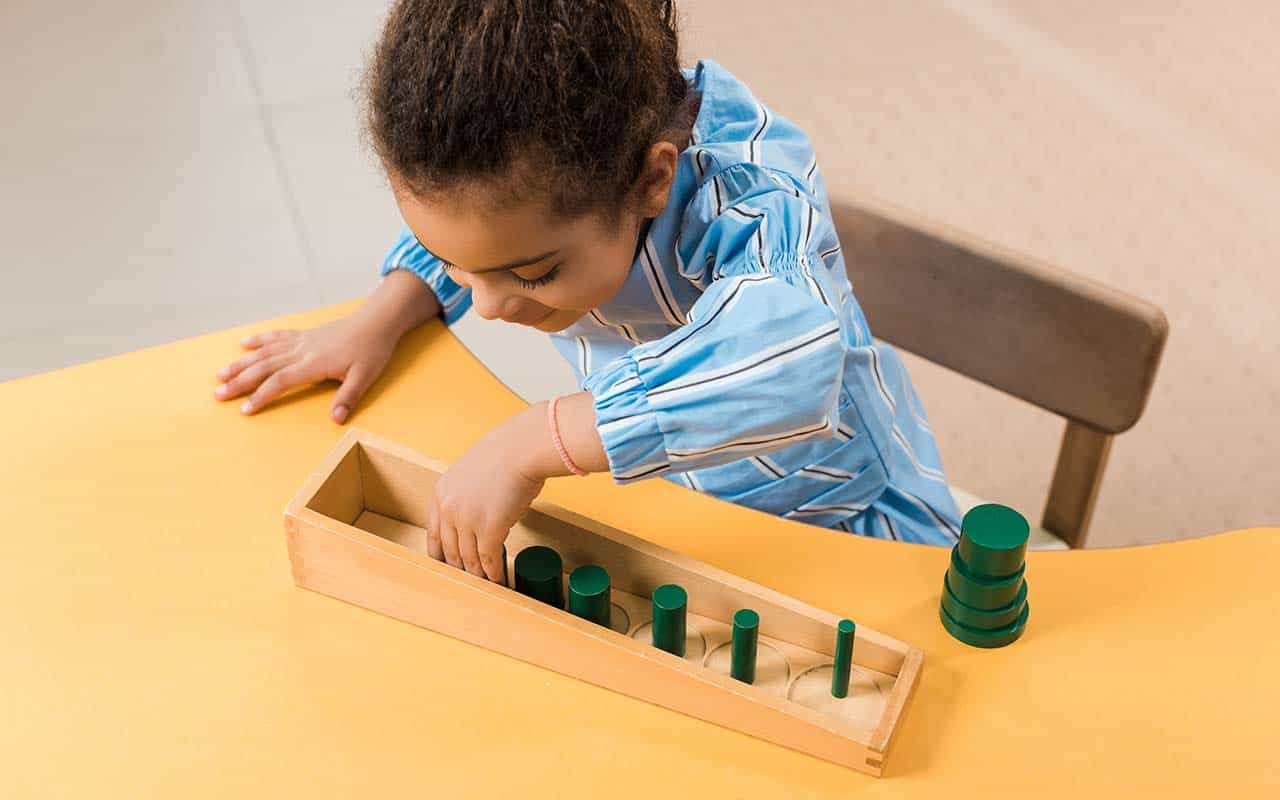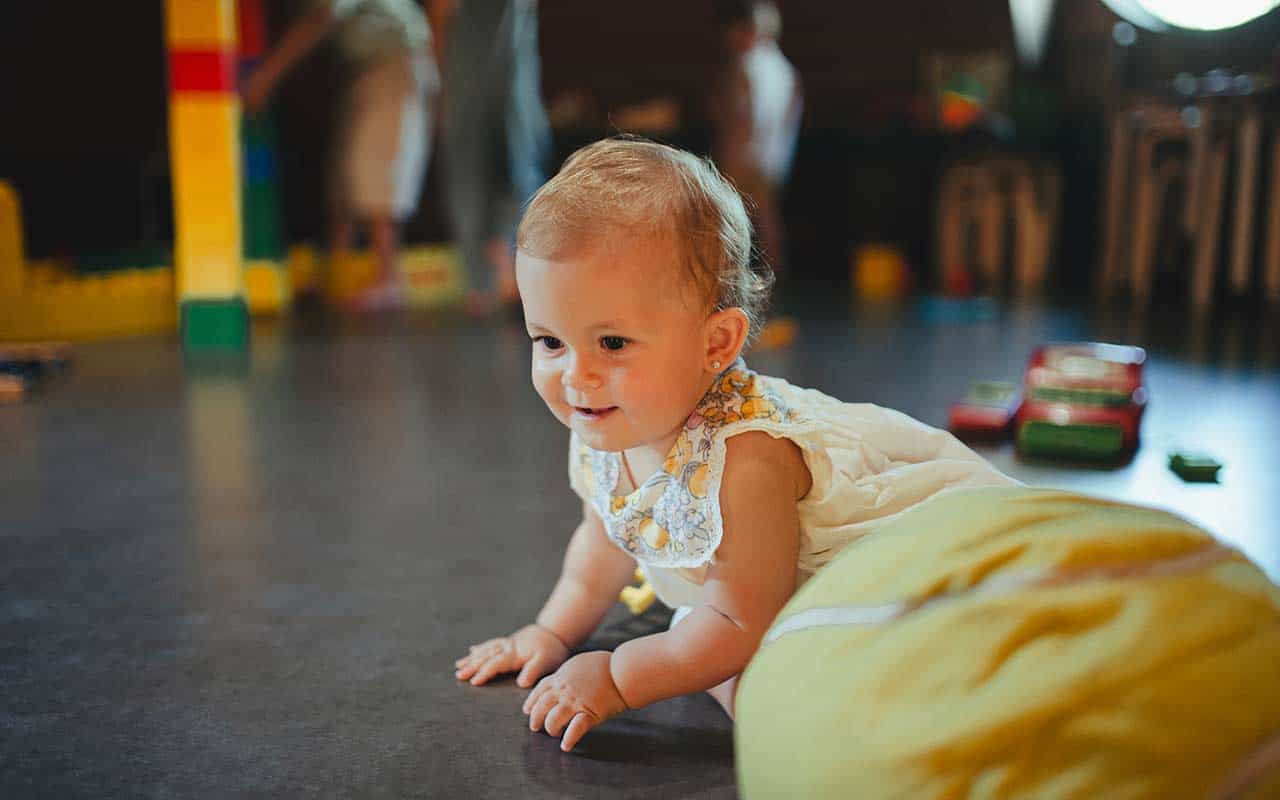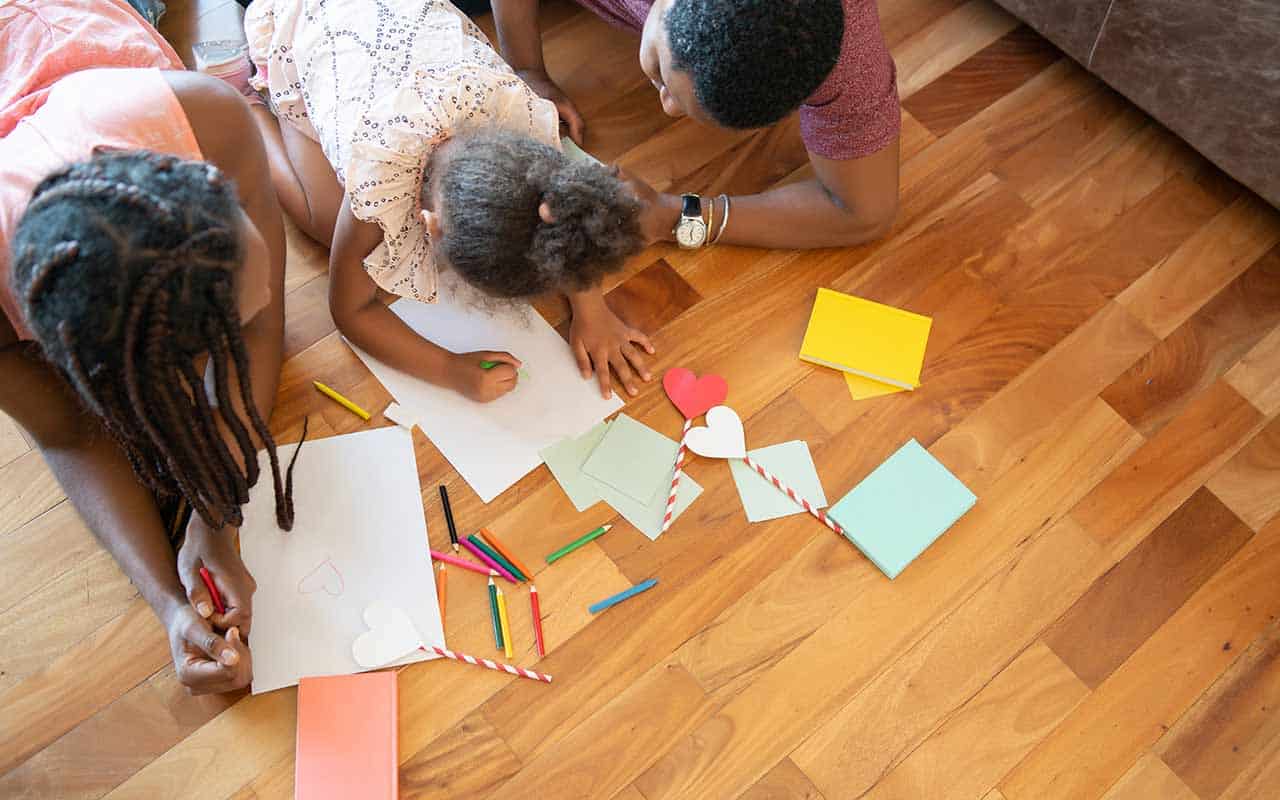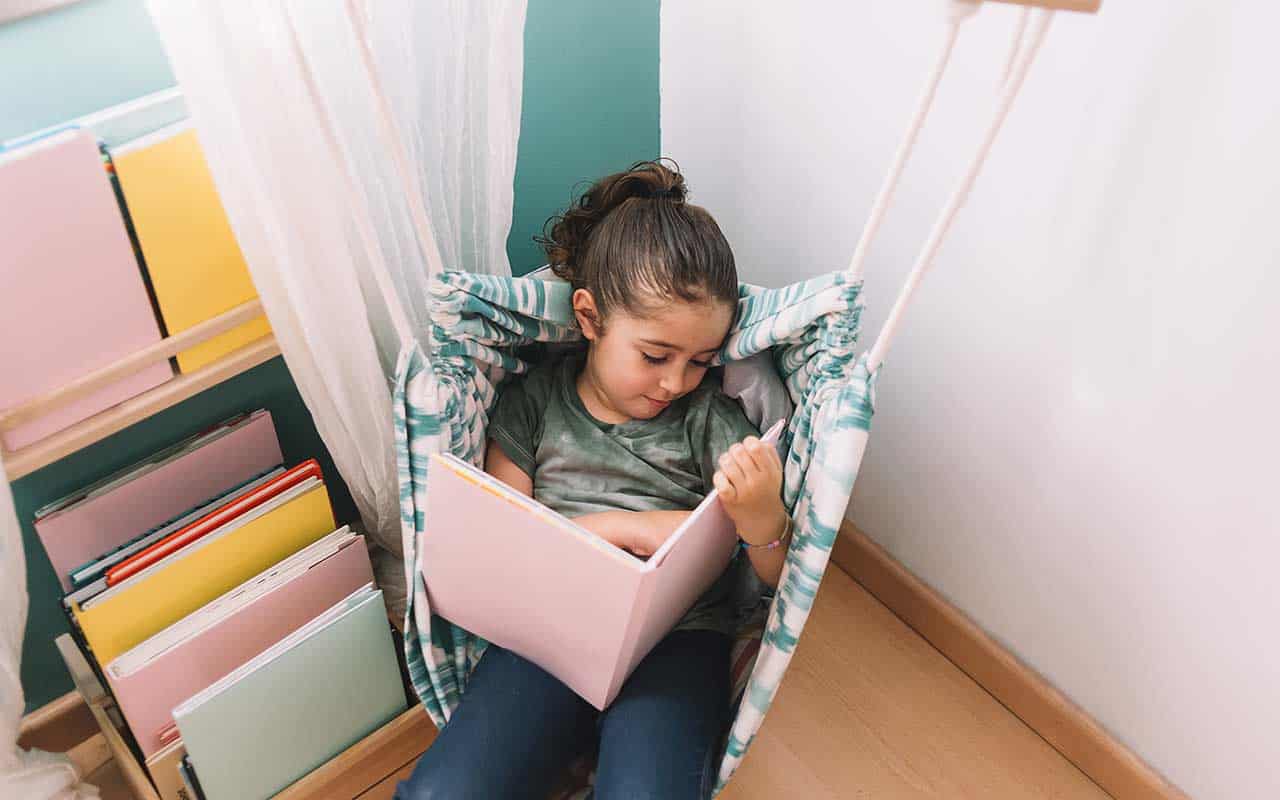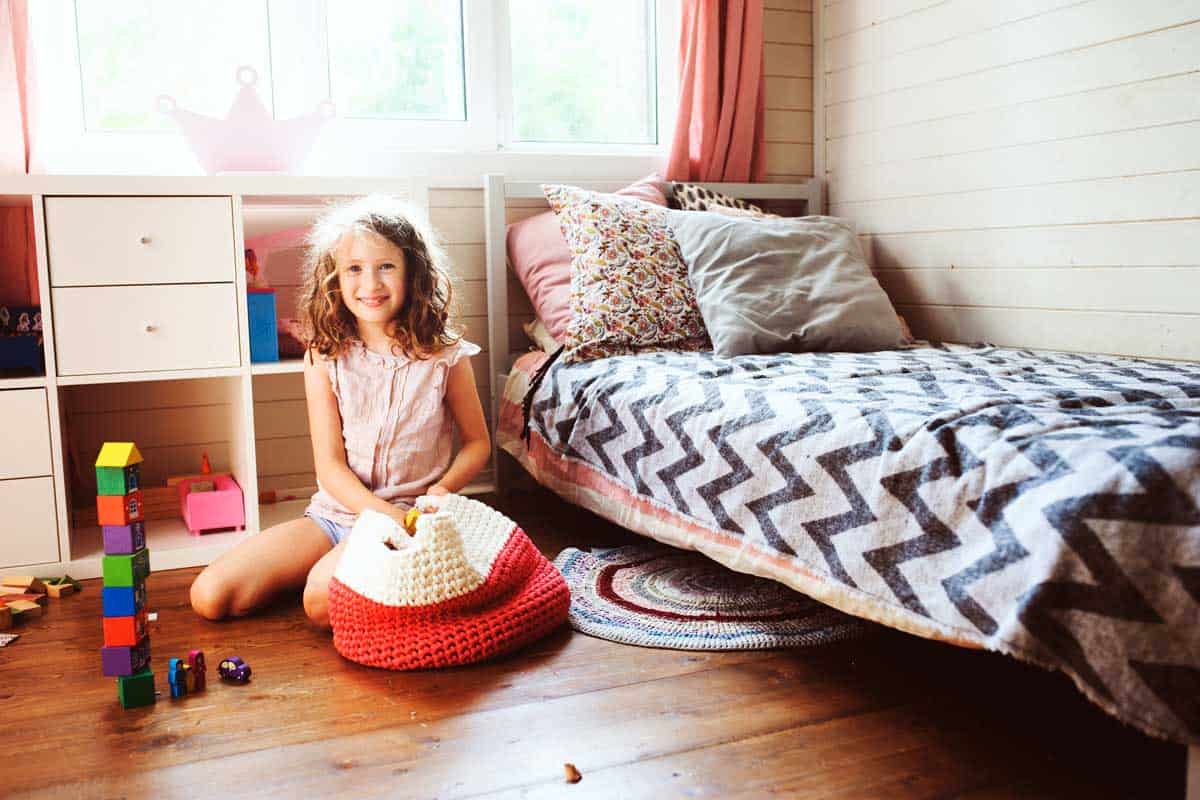Alternative approaches that promise to nurture the intellect and the whole child are increasing in popularity. RIE, Montessori, Waldorf, and Reggio Emilia have emerged as beacons of innovative education, each offering a unique lens through which to view the developing child.
But how can these philosophies, often associated with specialized schools, be brought into the home environment?
Understanding Alternative Early Childhood Education Approaches
Before we discuss the hands-on aspects, it’s essential to understand the guiding principles that underpin these alternative approaches.
Resources for Infant Education (RIE)
Developed by Magda Gerber, a Hungarian-American early childhood educator, in the 1940s and formally established in 1978, the RIE philosophy centers on respect for the infant as a unique human being.
RIE advocates for natural motor development, encouraging infants to move freely and develop at their own pace.
Respectful communication is a cornerstone, and it encourages caregivers to speak to infants as capable individuals, even from birth.
“Respectful Communication encourages caregivers to speak to infants as capable individuals at any age.”
RIE urges parents and caregivers to trust the infant’s innate abilities, fostering independence and self-confidence from the earliest stages of life. By creating this environment of respect and attentiveness, RIE practices lay the groundwork for a child’s lifelong journey of self-discovery and learning.
The Montessori Method
Dr. Maria Montessori, an Italian physician and educator, developed the Montessori Method in the early 1900s. Her first Casa dei Bambini (Children’s House) opened in Rome in 1907.
Maria Montessori’s approach revolutionized early childhood education, emphasizing child-led learning.
The Montessori method is built upon the concept of a prepared environment, where spaces are carefully designed to promote independence and exploration.
These environments often feature mixed-age classrooms, encouraging peer learning and mentorship among children at different developmental stages.
Central to the Montessori approach is hands-on learning materials. These specially crafted tools isolate specific concepts and allow children to explore ideas tangibly.
Combined with the freedom to choose activities, Montessori aims to cultivate a deep love of learning by allowing children to follow their interests within a structured framework.
Waldorf Education
Rudolf Steiner, an Austrian philosopher, social reformer, and esotericist, developed Waldorf education in 1919 in Stuttgart, Germany. His holistic approach integrates the arts, movement, and nature into all aspects of learning. Imagination and creativity are strongly emphasized, and storytelling and artistic activities engage children on multiple levels.
Waldorf Education fosters a deep connection to nature, incorporating regular outdoor experiences and natural materials in the classroom.
One distinctive feature of Waldorf education is its approach to academics. Formal academic instruction is often delayed in favor of play-based learning in the early years. This philosophy stems from the belief that children need time to develop their physical, emotional, and social capacities before diving into abstract intellectual concepts.
By harmonizing the child’s body, mind, and spirit, Waldorf education aims to produce well-rounded, creative, and socially conscious individuals.
The Reggio Emilia Approach
Originating in post-World War II Italy, the Reggio Emilia philosophy views children as capable co-constructors of their learning.
The Reggio Emilia approach is characterized by project-based learning, where extended investigations are based on children’s interests and questions.
Documentation is crucial, with detailed records of children’s thoughts, work processes, and developmental journeys.
In Reggio Emilia-inspired settings, the environment is considered the “third teacher,” alongside parents and educators. Spaces are thoughtfully designed to inspire exploration, foster collaboration, and provoke learning.
Community involvement is emphasized, and education is seen as a collaborative process between children, teachers, and parents, creating a rich, interconnected learning ecosystem.
Bringing Alternative Education Home
Unlike schools, homes aren’t purpose-built educational environments. However, this challenge also offers remarkable opportunities for personalized learning experiences.
The home setting allows for distinctive personalized attention. One-on-one interaction between caregiver and child enables more profound engagement with the child’s interests and needs.
An intimate learning environment can foster deep connections and tailored educational experiences that are difficult to achieve in more extensive group settings.
Home settings can adapt quickly to the child’s changing needs and interests. As children grow and develop, spaces can be modified, and learning experiences can be adjusted easily, ensuring that the educational approach evolves with the child.
“Home-based alternative education allows for seamless integration with family life.”
Educational principles can be woven into daily routines, turning everyday moments into learning opportunities. This integration helps children understand the relevance of their learning to real-life situations, enhancing the retention and application of knowledge.
The key to successfully bringing these approaches home lies in finding knowledgeable caregivers who can translate these pedagogical principles into home-based practices.
Implementing Specific Approaches
RIE at Home
Implementing RIE at home starts with creating safe spaces where infants can move freely without constant intervention. Designate a specific area of your living room or nursery as a protected exploration zone, free from hazards. Provide age-appropriate objects for discovery.
An essential practice in RIE is ‘sportscasting’ – narrating your actions and the infant’s experiences to promote language development. Calmly describe what you’re doing during caregiving routines and what the infant is experiencing.
EXAMPLES
“I’m going to pick you up now.” “My hands are reaching towards you,” or “You’re reaching for the red ball.” “It looks like it’s just out of your reach.”
Respecting routines is another crucial aspect of RIE. Establish predictable caregiving routines, always informing the infant of what’s coming next. Predictability helps infants feel secure and develop their sense of time and sequence.
Montessori at Home
Creating a Montessori environment at home involves organizing low shelves with carefully selected toys and materials at the child’s level.
Encourage independence by allowing children to choose their activities without adult assistance. Rotate these materials regularly to maintain interest and provide new challenges as the child develops.
Facilitating practical life skills is a cornerstone of Montessori education. Involve children in daily tasks like:
- Food preparation
- Setting the table
- Caring for plants
These activities teach valuable skills and boost self-esteem as children contribute meaningfully to household tasks.
In a Montessori-inspired home, less is often more. Rather than overwhelming children with too many choices, present a limited selection of high-quality, purpose-driven materials. A curated approach helps children focus and engage more deeply with each activity.
Waldorf at Home
Establishing rhythms is key to bringing Waldorf education into the home.
Create daily and weekly routines that provide a sense of security and predictability. Start each day with a nature walk, having a particular song for transition times, or designating certain days for specific activities like baking or crafting.
Per Waldorf principles, limit screen time and emphasize imaginative play and interaction with natural materials. Stock your home with open-ended toys made from natural materials—wooden blocks, silk scarves, beeswax crayons—that stimulate creativity and sensory exploration.
Incorporate the arts into everyday life by making music, painting, and handicrafts regular activities:
- Begin the day with a song
- Keep a basket of knitting or sewing projects accessible
- Have a dedicated space for watercolor painting
In Waldorf education, the creation process is valued as much as, if not more than, the final product.
Reggio Emilia at Home
Documentation is a crucial component of the Reggio Emilia approach.
Create visual records of your child’s projects and thoughts:
- Journal questions and ideas
- Photograph creations
- Record storytelling
Display these documents in your home to show that you value your child’s work and to encourage further exploration of ideas.
Following your child’s interests is crucial in Reggio-inspired learning. Use your child’s curiosity as a springboard for extended investigations.
FOR EXAMPLE
If your child becomes fascinated by shadows, this could lead to experiments with light sources, shadow puppetry, or explorations of how shadows change throughout the day.
The Reggio approach emphasizes community involvement. Connect with local experts or resources related to your child’s interests.
You might visit a local bakery if your child is curious about bread-making, invite a musician to your home if they’re interested in instruments, or explore nearby parks and nature reserves to support their curiosity about plants or animals.
Success Stories from Our Families
The Thompson Family: RIE in Action
When the Thompsons welcomed twins, they were overwhelmed by conflicting parenting advice. We matched them with Sarah, a RIE-trained newborn care specialist.
Sarah helped the Thompsons create a respectful environment where the twins could develop independently. She guided them in observing their babies’ cues and responding sensitively rather than jumping in to solve every perceived problem.
The RIE practice of ‘wants nothing’ time was introduced. The babies were given space to explore freely under watchful but non-interfering supervision. Sarah also demonstrated how to communicate respectfully with the infants, explaining each step of care routines and acknowledging their feelings.
The result? Two confident, independent toddlers who communicate their needs. The Thompsons report that their children are remarkably self-assured, adept at independent play, and able to express their emotions effectively. They credit the RIE approach with fostering a robust and respectful bond within their family.
The Lius: Montessori Magic
The Liu family wanted to foster their 3-year-old’s budding independence. Enter Michael, a Montessori-trained nanny. Michael transformed the playroom into a Montessori-inspired space and guided the parents in supporting their child’s self-directed learning.
Michael replaced traditional toys with Montessori materials, each designed to teach a specific concept. He showed the Lius how to present these materials and when to step back, allowing their daughter to explore independently. He also introduced practical life activities, teaching their child to pour her drinks, prepare simple snacks, and care for her environment.
Within months, the Lius marveled at their daughter’s growing confidence and problem-solving skills. They noticed she was more focused during activities, took pride in caring for her space, and showed a genuine enthusiasm for learning. The Montessori approach at home cultivated academic skills, self-reliance, and a love of discovery.
The Nwosu Family: Waldorf Wonder
The Nwosus were concerned about their 5-year-old’s restlessness and difficulty focusing. We introduced them to Elena, a caregiver with Waldorf training. Through storytelling, outdoor exploration, and artistic activities, Elena brought rhythm to their days.
Elena established a predictable daily rhythm, starting each morning with a nature walk and a seasonal song. She introduced the Nwosus to ‘breathing in and out’ activities, alternating focused tasks with free play.
Storytelling became a cherished part of their routine, with Elena crafting tales that subtly addressed the child’s emotional needs.
Artistic activities were woven throughout the day, from modeling with beeswax to wet-on-wet watercolor painting. Elena showed the parents how to engage their son in household tasks rhythmically and joyfully, turning chores into bonding experiences.
The change in their son was remarkable—he became calmer, more imaginative, and eager to learn. The Nwosus report that their home feels more harmonious, and they’ve developed a deeper connection with their child through shared rhythms and creative activities.
The Rodriguezes: Reggio Revelations
The Rodriguez family wanted to nurture their 4-year-old’s intense curiosity. We matched them with Carlos, a Reggio Emilia-inspired educator. Carlos showed them how to turn their child’s questions into long-term projects, documenting the learning journey.
When their daughter became fascinated by how plants grow, Carlos guided the family in creating a long-term investigation. They planted seeds, photographed the growth process, and invited a local botanist to answer questions.
Carlos showed the Rodriguezes how to document their daughter’s theories and observations, creating a visual diary of her learning.
The parents were amazed at the depth of understanding their child developed through this process. They noticed her vocabulary expanding, her observational skills sharpening, and her confidence in expressing ideas growing.
The Reggio-inspired approach had transformed the Rodriguez home into a vibrant learning laboratory, with every question becoming an opportunity for discovery.
Is Alternative Home-Based Education Right for You?
Deciding on an educational approach is deeply personal, requiring careful consideration of various factors. Your child’s temperament and learning style should be at the forefront of this decision.
The Best Approach
Some children thrive in Montessori’s structured environment, while others may blossom in Waldorf education’s imaginative world. Observing how your child engages with different activities can provide valuable insights into which approach might resonate most strongly with them.
Your family’s values and long-term educational goals are crucial in this decision. Consider what qualities and skills you most want to nurture in your child. Do you prioritize academic readiness, creative expression, emotional intelligence, or balance?
Different approaches emphasize different aspects of development, and understanding your priorities will guide you toward the most fitting philosophy.
The Time Needed
Another important consideration is the level of involvement you desire in your child’s early education. Some approaches, like Reggio Emilia, encourage significant parental participation, while others may require less day-to-day involvement.
Reflect on your availability and how you envision your role in your child’s learning journey.
The Day to Day
Your home environment and daily routines should also factor into your decision. Some approaches require specific materials or setups, while others are more flexible.
Consider your available space and how different educational approaches might integrate with your family’s lifestyle and schedules.
Blending Approaches
It’s important to remember that these approaches aren’t mutually exclusive. Many families successfully blend elements from different philosophies to create a unique educational experience tailored to their child’s needs.
Our Commitment to Your Family’s Educational Journey
Are you ready to explore how alternative early childhood education can transform your home environment? We invite you to take the first step on this exciting journey. Household Staffing can match you with the perfect caregiver who can create a home environment that nurtures your child’s unique potential.
Contact us today and take the first step towards a transformative home learning experience. Your child’s journey to lifelong learning and success begins in the nurturing environment of your own home.
Your Questions
Q: What is the difference between Montessori and Waldorf education?
A: Montessori focuses on self-directed learning with specially designed materials, while Waldorf emphasizes imagination, arts, and nature in a rhythmic daily structure.
Q: Can RIE principles be applied to older children?
A: While RIE was developed for infants and toddlers, its core principles of respect and observation can be adapted for older children.
Q: How does the Reggio Emilia approach differ from traditional preschool?
A: Reggio Emilia is project-based and child-led, with an emphasis on documentation and viewing the environment as a “third teacher.”
Q: What qualifications should I look for in a caregiver implementing these approaches?
A: Look for formal training in the specific approach, practical experience, and a genuine commitment to the philosophy’s core principles.
Q: How can I integrate alternative education approaches with traditional schooling?
A: Many principles can be applied at home to complement school learning, such as creating prepared environments or incorporating project-based learning into after-school time.
Q: How can I create a prepared environment at home for Montessori-style learning?
A: Focus on child-sized furniture, low shelves with carefully selected materials, and areas for practical activities. Ensure everything has a designated place and is easily accessible to your child.
Q: What role does play have in these alternative education approaches?
A: Play is central to all these approaches, but its implementation varies. Waldorf emphasizes imaginative play, Montessori focuses on “work” that is play-like, Reggio Emilia uses play as a vehicle for project-based learning, and RIE encourages uninterrupted, self-directed play.
Q: How do these alternative approaches handle technology and screen time?
A: These approaches generally limit or exclude screen time for young children. Waldorf and RIE typically avoid screens entirely for young children. At the same time, Montessori and Reggio Emilia might incorporate limited, purposeful use of technology in later years.
Q: Can alternative education approaches be combined with homeschooling?
A: Yes, many homeschooling families draw inspiration from these approaches. They can provide a framework for creating a rich, child-centered learning environment at home.
Q: How do alternative education approaches address social development?
A: Each approach has its own method: Montessori uses mixed-age classrooms, Waldorf emphasizes group activities and festivals, Reggio Emilia focuses on collaborative projects, and RIE encourages respectful interaction from infancy.
Q: What is “cosmic education” in Montessori, and can it be implemented at home?
A: Cosmic education is Montessori’s approach to teaching the interconnectedness of all things. You can support this at home by providing materials and experiences that help your child understand their place in the world, from nature walks to simple science experiments.
Q: How do these approaches handle discipline and conflict resolution?
A: These approaches generally focus on respectful communication, natural consequences, and supporting the child’s developing self-regulation. They typically avoid traditional punishment by guiding children to understand the impact of their actions.
Q: How can parents stay involved in their child’s learning using these alternative approaches?
A: Parental involvement varies by approach but can include observing your child’s activities, participating in parent education sessions, incorporating approach-specific language and practices at home, and collaborating with caregivers on long-term projects or themes.
-
Citations
- “The Whole-Brain Child” by Daniel J. Siegel and Tina Payne Bryson: Provides neuroscience-based strategies for nurturing children’s developing minds. https://www.wholeBrainChild.com
- Association Montessori Internationale (AMI): Official resource for Montessori education worldwide. https://www.montessori-ami.org
- Waldorf Education website: Comprehensive resource on Waldorf education principles and practices. https://www.waldorfeducation.org
- Resources for Infant Educarers (RIE): Official site for RIE approach, founded by Magda Gerber. https://www.rie.org
- North American Reggio Emilia Alliance (NAREA): Organization promoting Reggio-inspired education in North America. https://www.reggioalliance.org
